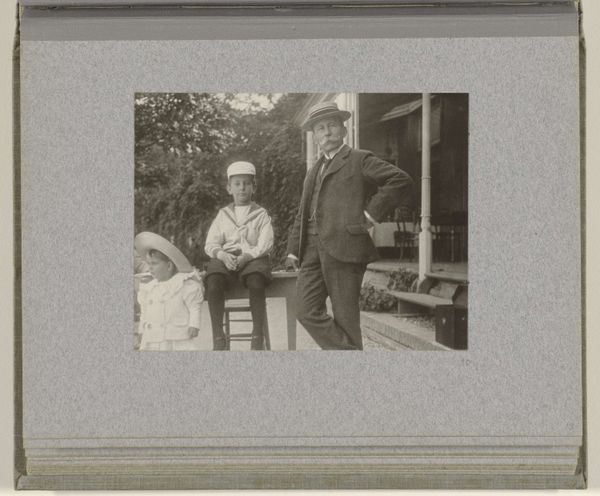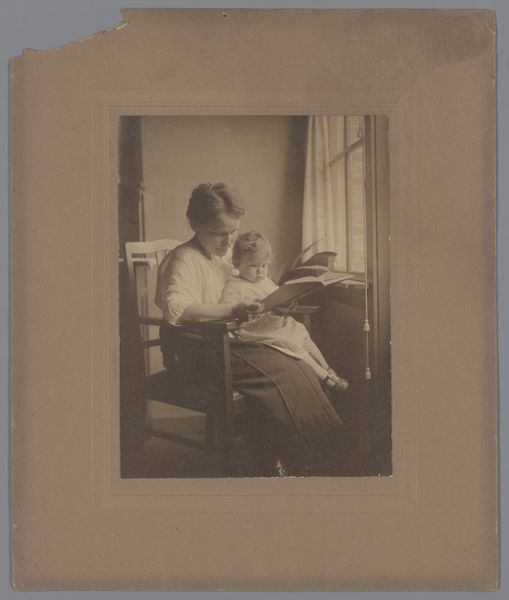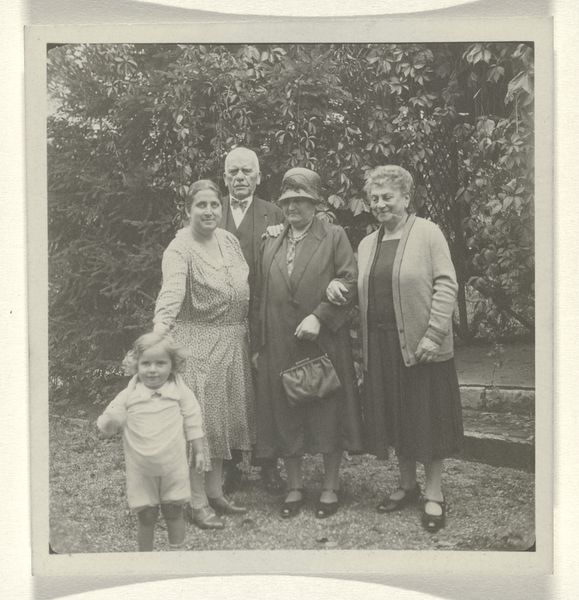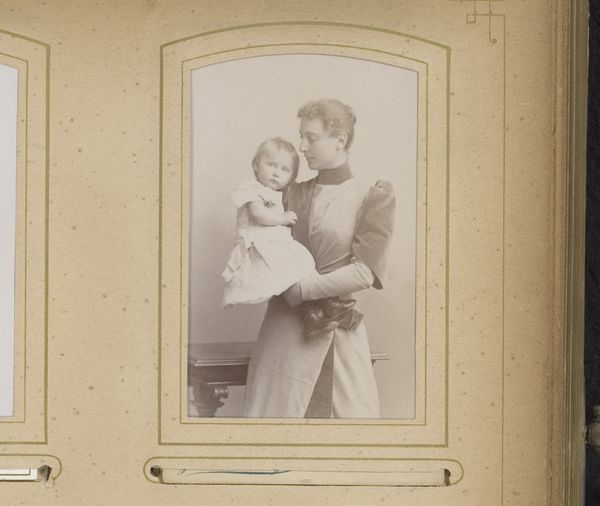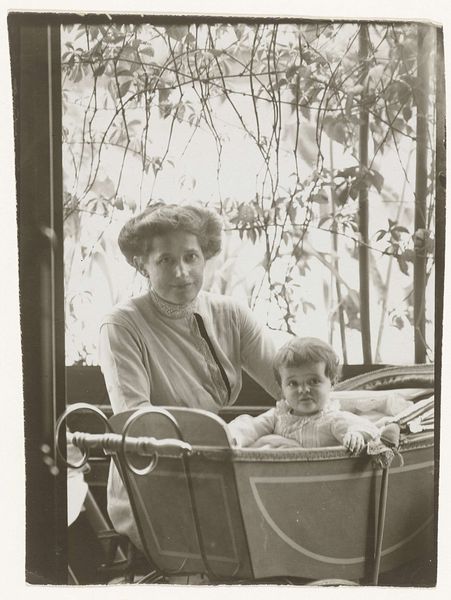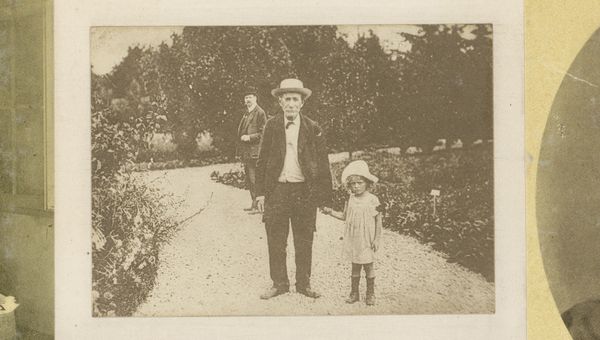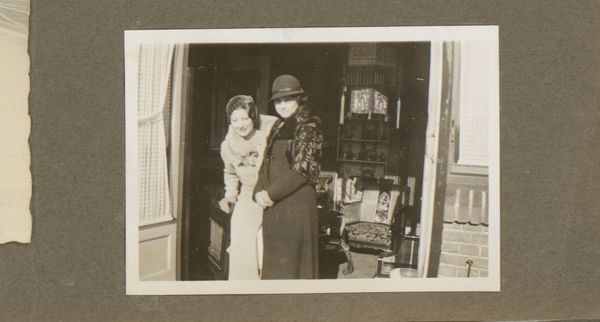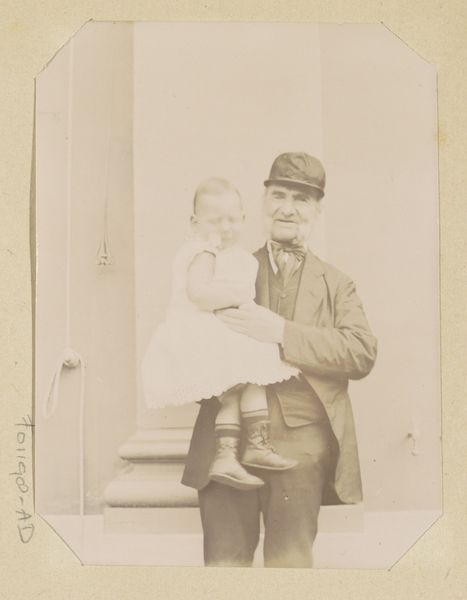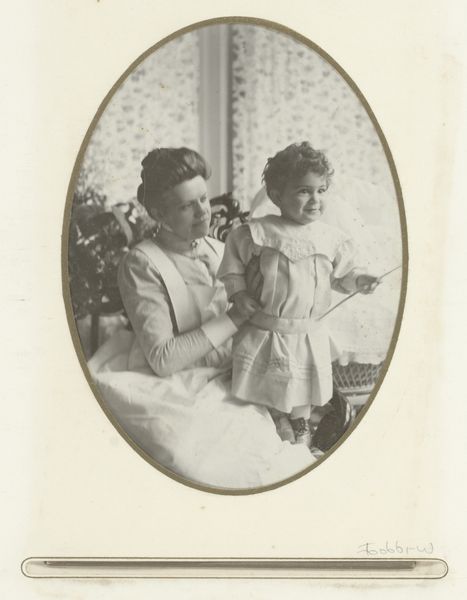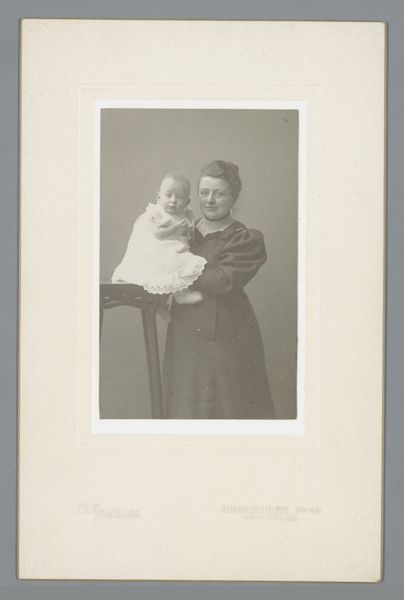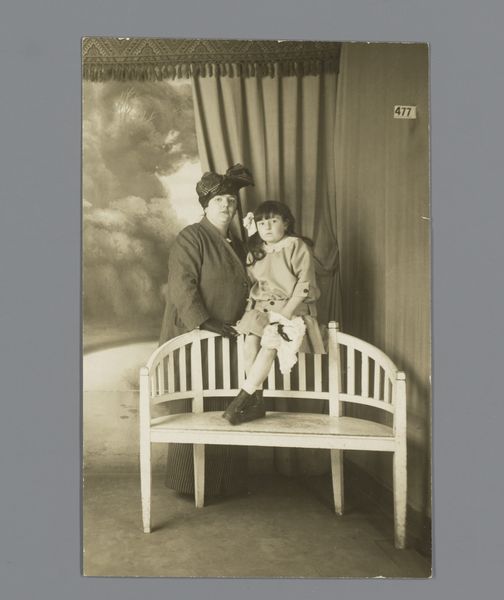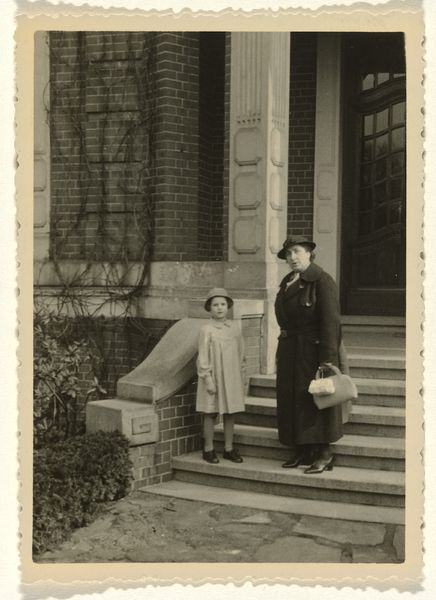
Isabel Wachenheimer in kinderwagen, met grootmoeder Josefine Levi-Moos op achtergrond, oktober 1929 1929
0:00
0:00
photography, gelatin-silver-print
#
portrait
#
print photography
#
archive photography
#
photography
#
historical photography
#
gelatin-silver-print
#
modernism
#
realism
Dimensions: height 60 mm, width 55 mm
Copyright: Rijks Museum: Open Domain
Curator: This gelatin-silver print, dated 1929, is titled "Isabel Wachenheimer in kinderwagen, met grootmoeder Josefine Levi-Moos op achtergrond." What strikes you about it? Editor: The light, it’s so diffuse, yet somehow intimate. The grayscale adds to the feeling that we are peering into a deeply personal moment frozen in time. There’s an interesting balance between formality and everyday life. Curator: Precisely. The formal attire of the grandmother juxtaposed with the child in her pram creates a striking visual and conceptual contrast. The composition directs our gaze from the soft curves of the baby’s face up to the angular fence and then the grandmother’s face. There’s a sense of visual layering that’s very effective. Editor: The fence acting as a subtle partition between generations, perhaps? The child represents the future, innocent and protected, while the grandmother embodies history, experience, and tradition. Notice her fur collar and hat; symbols of her social standing. She’s ensuring continuity through familial lineage. Curator: And the surface texture itself, the slight graininess inherent to the gelatin-silver process, contributes to this palpable sense of time passing. The composition's reliance on vertical and horizontal lines stabilizes the maternal and youthful energies that converge on the stroller as a focal point. Editor: I see the stroller as a symbol, too. A vehicle not only for physical transportation, but for cultural inheritance, moving the child into the future with the past hovering close behind. It speaks to the cycle of life. Curator: An insightful point. And to build on your observation regarding the formal elements, consider how the arrangement of tones—the bright highlights on the child’s face, balanced by the deep shadows in the grandmother's clothing—generates a captivating tension within a rather simple arrangement of forms. Editor: I leave with an acute sense of tenderness, yet also with a quiet acknowledgement of the inevitable forward march of time that connects and separates these figures. It feels strangely poignant. Curator: Agreed. The image resonates long after the viewing, precisely because of that delicate balance between formal presentation and raw emotion—an emotional encapsulation indeed.
Comments
No comments
Be the first to comment and join the conversation on the ultimate creative platform.
